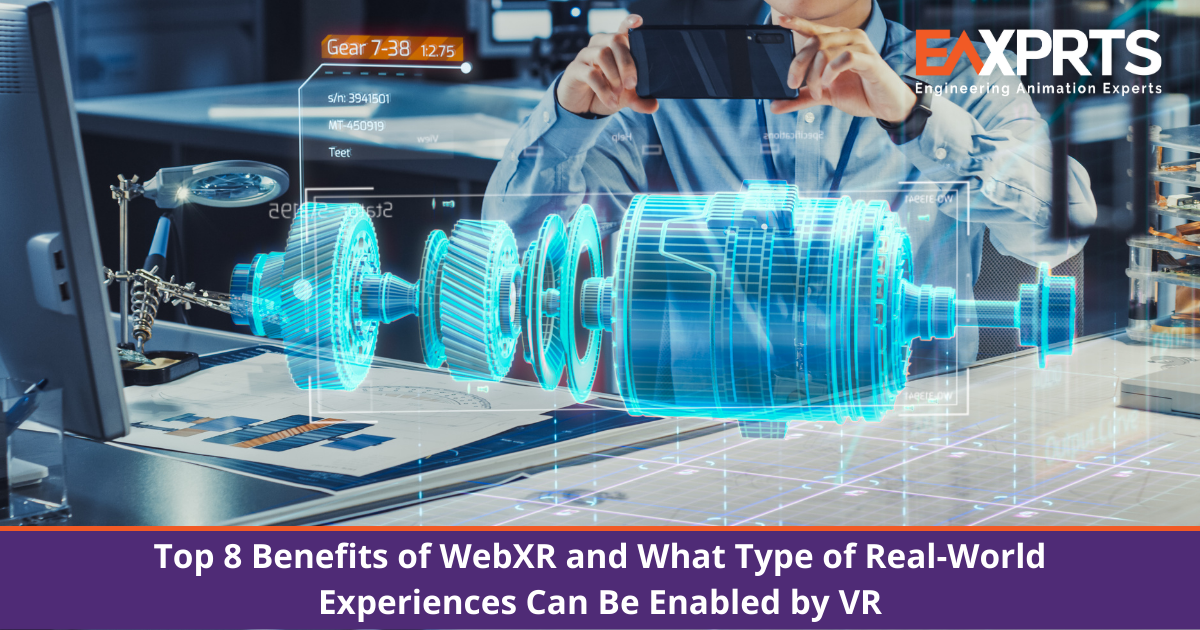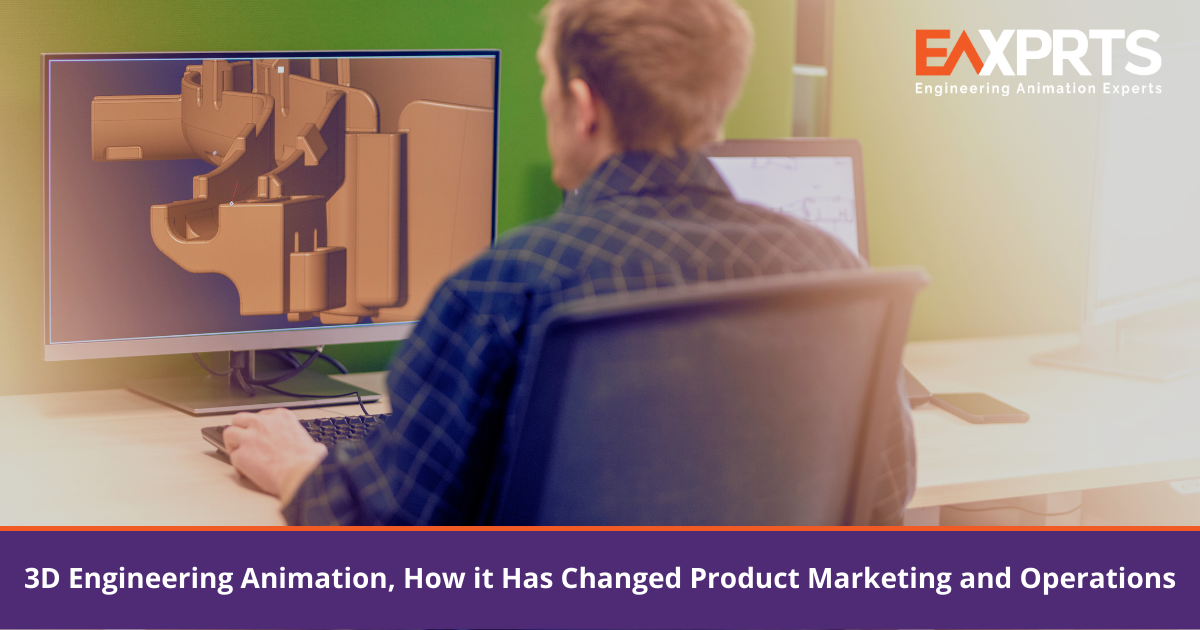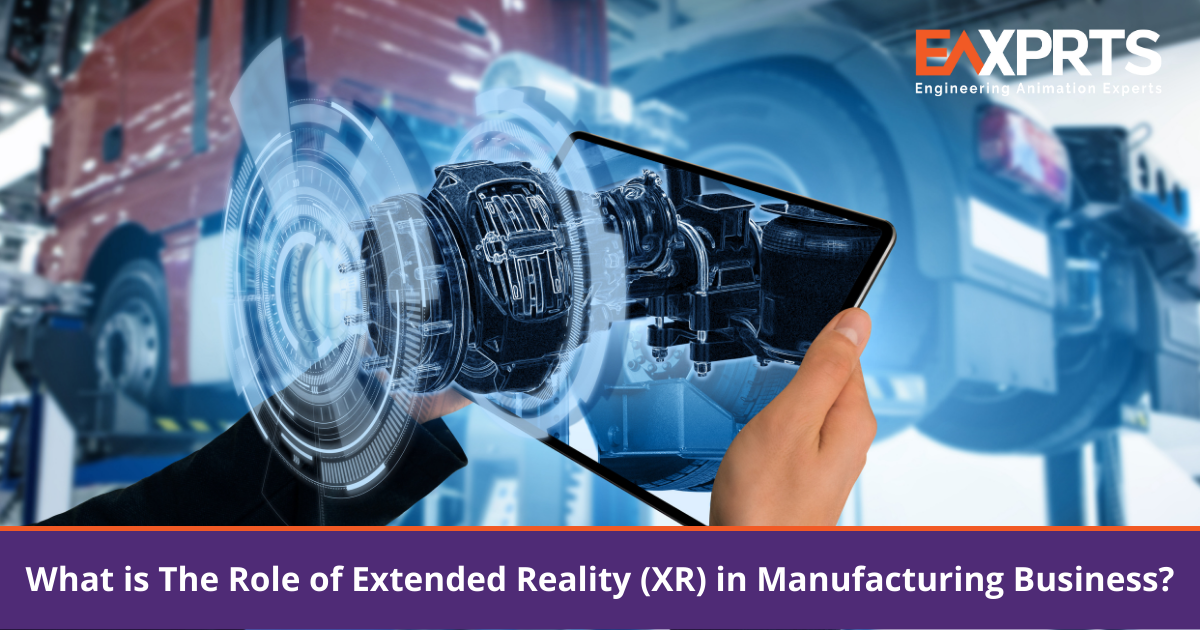
8 Benefits of WebXR and What Type of Real-World Experiences Can Be Enabled by VR
May 3, 2023
3D Engineering Animation, How it Has Changed Product Marketing and Operations
May 4, 2023The manufacturing industry globally is highly competitive and always looking for solutions. Solutions to reduce design and development cost, optimize the use of raw materials, speed up production, and now increasingly, reduce energy consumption and the carbon footprint as well. The process of manufacturing, from concept to finished products, is fraught with risks and errors, which invariably adds to the costs. Historically, technology has helped the manufacturing industry find solutions as it evolved through successive industrial revolutions, and in the digital era, it has added new tools to further these gains. Extended Reality is one of the modern-day innovations under the wider digital transformation program that is now gaining increasing traction in this quest.
What is Extended Reality (XR)?
Extended reality is an umbrella term that combines three different types of computer-generated simulations – virtual reality (VR), augmented reality (AR), and mixed reality (MR). To understand it fully, one must know the difference between these three realities or simulated environments. While VR is a completely simulated experience that isolates the user from reality and needs special VR headsets, AR just adds interactive digital elements to real-world environments and apart from AR headsets, can also be viewed on a smartphone or a tablet. Mixed Reality or MR combines the best elements of VR and AR to blend physical and digital worlds. To put it in simpler terms, VR is fully digital; AR is semi-digital and MR, a combination of the best of both. So what exactly is Extended Reality? It is an umbrella term as mentioned earlier, but more than that, by combining all the three immersive experiences, XR obliterates the difference between the real world and the digital world and creates a more personalized immersive experience, by blending it with other technologies like artificial intelligence and cloud computing.
How Will XR Revolutionize Training?
Extended reality being an immersive environment is ideal for imparting practical training in a simulated environment, much like the aircraft or automobile simulators, which give trainee pilots and drivers an exposure to various hypothetical scenarios and how to maneuver out of those situations successfully. It is not possible to recreate these situations in real life conditions as that could be dangerous, whereas with XR, the trainees learn how to avoid such potentially dangerous situations and learn from that experience. This is very useful for training personnel on special vehicles like forklifts and pallet trucks that are often used indoors and in warehouses with narrow aisles and with little room for maneuvering.
XR is already widely used in training across industries and businesses, and really came to the fore during the pandemic. For example, the World Economic Forum website has documented three use cases that successfully adopted XR to provide interactive, scenario-based and low-risk learning experiences in healthcare, education and water conservation sectors. But the manufacturing industry has been using it even before the pandemic, which however boosted the applications. New employees can now be taught everything about the machines in training sessions designed in XR, before inducting them to the shop floor, with detailed instructions about every part of the machine or assembly line and the role these perform. Similarly, for maintenance of any kind – reactive or predictive – XR can be effectively used to show how to dismantle a machine or engine, check the individual parts, examine potential problem areas like bearing housings and lubrication points and how to access them safely, check for damage or distortion, and learn how to service or replace those components. In short, the maintenance manuals can be simplified and digitalized, the instructions overlaid digitally on the graphics of actual machinery and components, making it easy to understand.
Another area where training by XR is making significant contributions is to safety. This is especially relevant in process industries and hazardous locations like mining, and remote workplaces like offshore installations in Oil & Gas or windmills, or situations where lone workers operate. These are also places that use complex machines where practical training is often not advisable, without first imparting simulated experience. XR offers the way out by realistic simulations where the trainees learn about the operations in a safe environment, yet experience all possibilities of accidents or mishaps and malfunctions, avoiding potential loss to life, limb and assets. These are also places that are potential fire hazards and XR can train workers in basic fire fighting skills as well as rescue operations in helping co-workers to safety before attempting remedial measures. The beauty of XR training is in the fact that it allows trainees to make mistakes without any damage, yet also being realistic in every other way.
How will XR Make the Manufacturing Process Efficient?
Technology, as mentioned at the beginning, is helping raise manufacturing efficiency. XR is lending a big hand to these efforts now, to make the processes more efficient, products more reliable with better quality, employees more productive, and operations more cost-effective. In a report titled ‘Seeing is Believing’ released in 2019, PwC had outlined how VR and AR are transforming business and the economy, with the potential to deliver a $1.5 trillion boost to the global economy by 2030. This will be achieved by measures ranging from creating new customer experiences to speeding up product development and improving workplace safety.
A product is born out of need, conceived in imagination and shaped on the drawing board by a team of experts, a collaborative effort. Traditionally the team works together in one location, which poses problems like getting them all together at one place for a specific period. XR today has made it possible that team members can work together from different locations, collaborating in virtual space, speeding up the process. Earlier the practice was to make a physical prototype and test every version of it for all attributes, consuming time and resources. XR enables virtual testing and simulation after every change of design or modification, eliminating the need for frequent prototypes. This results in shrinking the product development time, and time to market, from months to weeks, and weeks to days. During the pandemic, many companies developed machines to design and manufacture masks and other safety devices in a very short time by this method. Automobile companies, for example, are today using XR effectively to launch new models at shorter intervals. Electric vehicles manufactured today, with no baggage of legacy systems, are designed and developed totally in virtual space.
Improved maintenance practices is another aspect of the XR ecosystem which facilitates quick reference to experts by remote in the event of a breakdown, or when possible anomalies are detected in early stages in the data analyzed for predictive maintenance. Actual visuals of the machines or the affected parts can even be referred back to the OEM, if required. Major OEMs like ABB, Honeywell, Rockwell Automation and Siemens are all offering integrated services platforms with digital connectivity that factor all such requirements of their user industries. Scanning the spare parts inventory virtually can help locate the required parts quickly. All these measures collectively help accelerate troubleshooting, eliminating the need to call experts from other locations disrupting their schedules. This is the beginning of the collaboration era which is further bolstered by the XR ecosystem.
Conclusion
What the preceding paragraphs show is the extent of the potential XR holds to improve the way manufacturing business was done until recently. The early adopters are already reaping the benefits of digital transformation, having generated enough use cases in the process. The good thing is, other companies have now realized the importance of embracing digitalization, and come to appreciate the advantages they bring. On the other hand, the market for such technologies is booming. A recently published report by Fortune Business Insights states that the Virtual Reality market value was USD 924.7 million in 2018 and is expected to rise at a CAGR of 39.2% to reach USD 14,887.0 million by the end of 2026. This makes it amply clear the increasing trend of digitalization being accepted across almost all commercial sectors worldwide. On the flip side, the industry is also facing a shortage of adequate knowledge and requisite skills for implementation; the expertise required to handhold their digital transformation. This is a gap that is filled by skilled professionals at EAXPRTS, who have been helping companies for the last two decades in automation and robotics, and have the knowledge and skill sets in immersive technologies as well.
Talk to us today! Reach us on sales@eaxprts.com



